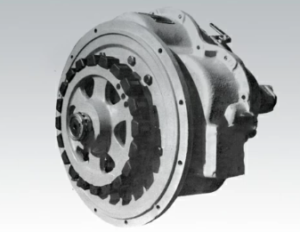
The Twin Disc MG507 Marine Gear is built for reliability and durability, but like any high-performance marine component, it requires consistent and thorough maintenance. Routine care ensures that the marine gear functions efficiently, minimizes downtime, and extends its service life. Neglecting maintenance can lead to premature wear, breakdowns, and costly repairs.
This comprehensive guide will cover the routine maintenance schedule, lubrication requirements and intervals, inspection points for wear and tear, and cleaning and storage recommendations for the Twin Disc MG507 Marine Gear.
Parts Catalog for Twin Disc MG507 Marine Transmissions
Rebuilt Twin Disc MG507 Marine Transmissions
Plate Kit For Twin Disc MG507 Marine Transmission
Gasket Kits For Twin Disc MG507 Marine Transmission
Routine Maintenance Schedule for Twin Disc MG507 Marine Gear
Establishing a routine maintenance schedule is essential for preventing unexpected failures and ensuring the longevity of your marine gear. The following schedule is designed to ensure systematic and comprehensive maintenance.
1. Daily Maintenance (Before and After Each Use)
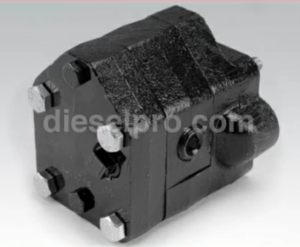
Daily checks help identify potential problems early, ensuring safe and efficient operation.
Pre-Operation Checklist
- Check Oil Levels: Inspect the lubrication oil level and ensure it’s within the recommended range. Low oil levels can result in gear damage.
- Inspect for Leaks: Look for signs of oil, hydraulic fluid, or coolant leaks around the MG507.
- Visual Inspection: Examine the gear housing and connections for any visible damage or abnormalities.
- Check Hydraulic Fluid: Ensure that hydraulic fluid levels are sufficient for smooth clutch operation.
- Inspect Cooling System: Check the oil-to-water heat exchanger for blockages or leaks.
Post-Operation Checklist
- Inspect for Leaks Again: After running the engine, check for leaks that may have developed during operation.
- Monitor Oil Color and Smell: If the oil smells burnt or appears discolored, it may indicate overheating or contamination.
- Listen for Abnormal Noises: Record any unusual sounds or vibrations for further investigation.
- Check for Vibration Issues: Vibration can indicate misalignment or wear. Address these issues promptly.
2. Weekly Maintenance
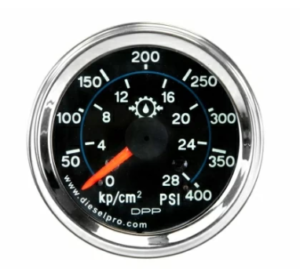
Weekly inspections focus on operational efficiency and ensuring all systems remain in optimal condition.
- Inspect Fluid Levels Thoroughly: Reconfirm oil, hydraulic, and coolant levels. Top off if necessary.
- Check for Wear on External Hoses and Fittings: Ensure that all external connections are secure and leak-free.
- Review Oil Temperatures and Pressures: Log any fluctuations and investigate irregularities.
- Inspect Couplings and Shaft Alignment: Ensure the coupling is tight, and alignment is within specification.
- Tighten Bolts and Fasteners: Verify torque settings and re-tighten if necessary.
3. Monthly Maintenance

Monthly inspections are more detailed and focus on deeper system evaluations.
- Full Oil Analysis: Check for contaminants or metal shavings in the oil, which could indicate internal wear.
- Inspect Heat Exchanger: Flush the heat exchanger to remove any buildup of debris or salt.
- Check Hydraulic Pressure Levels: Ensure that hydraulic systems are operating at correct pressures.
- Inspect Internal Seals: Check for early signs of seal wear or damage.
- Inspect and Clean Breather Vents: Remove any blockages to ensure proper ventilation.
4. Quarterly Maintenance (Every 3 Months)
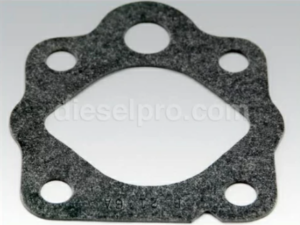
A quarterly maintenance check ensures the overall health of the system and helps identify long-term issues.
- Drain and Replace Oil (If Necessary): If the oil shows signs of contamination, replace it.
- Inspect Internal Gears and Bearings: Look for excessive wear, cracks, or damage.
- Check Propeller Shaft Alignment: Misalignment can develop over time and lead to wear.
- Inspect the Hydraulic System for Leaks: Test hydraulic pressures and check for leaks.
- Lubricate Moving Components: Apply fresh lubrication to prevent metal-on-metal contact.
5. Annual Maintenance
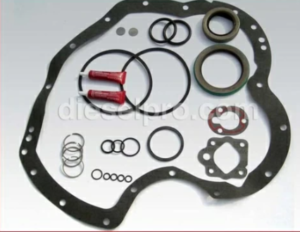
Annual maintenance is more extensive and may require partial disassembly for deep inspection.
- Complete Oil Replacement: Drain and replace all lubricating oils and hydraulic fluids.
- Inspect All Seals and Gaskets: Replace any that show signs of wear or damage.
- Test Heat Exchanger Efficiency: Conduct a full system flush and inspect for corrosion.
- Perform a Load Test: Operate the MG507 under load to assess performance and identify weaknesses.
- Re-Align Couplings and Shafts: Re-check all alignments and adjust as needed.
Lubrication Requirements and Intervals for Twin Disc MG507 Marine Gear

Proper lubrication is essential for reducing friction, minimizing wear, and ensuring the smooth operation of the MG507. The following section outlines the correct lubricants and intervals for maintenance.
1. Recommended Lubricants
For optimal performance, always use the manufacturer-recommended oils and fluids. Using substandard products can lead to accelerated wear and failure.
- Marine Transmission Oil: Use high-quality SAE 30 or SAE 40 oil, specifically designed for marine applications.
- Hydraulic Fluid: Choose ISO VG 68 or equivalent hydraulic fluids to ensure smooth clutch operation.
- Anti-Seize Compound: Apply to bolts and fasteners to prevent corrosion and facilitate easier disassembly.
2. Lubrication Intervals
Adhering to the correct lubrication schedule ensures maximum performance and longevity.
- Daily: Check and top off oil and hydraulic fluids.
- Monthly: Perform a visual oil inspection for contaminants and color changes.
- Quarterly: Replace oil if contamination is detected or after heavy usage periods.
- Annually: Conduct a full oil and hydraulic fluid replacement.
3. Tips for Effective Lubrication
- Avoid Overfilling: Too much oil can lead to increased pressure and leaks.
- Watch for Contamination: Regularly check for water contamination, which can degrade oil quality.
- Monitor Oil Color and Smell: Dark or burnt oil indicates excessive heat or contamination.
- Label Maintenance Logs: Record every oil change to track intervals and detect irregularities.
Inspection Points for Wear and Tear on Twin Disc MG507 Marine Gear
Regular inspections are critical for identifying signs of wear early. Catching issues early can prevent costly repairs and avoidable downtime.
1. Clutch Plates
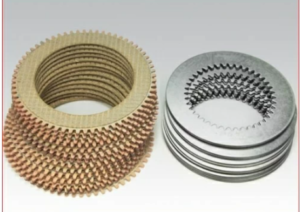
- Inspect for Burn Marks: Heat stress can lead to clutch slippage.
- Check Thickness: Worn plates reduce efficiency and require immediate replacement.
- Look for Cracks or Deformations: Damaged clutch plates compromise engagement.
2. Hydraulic System
- Inspect for Leaks: Hydraulic leaks can reduce clutch efficiency and cause dangerous pressure drops.
- Check Hose Condition: Replace hoses that are cracked, brittle, or leaking.
- Test Pressure Levels: Use a gauge to confirm correct hydraulic pressure.
3. Bearings and Gears
- Listen for Noise: Grinding or whining sounds indicate worn bearings.
- Check Gear Teeth: Look for cracks, pitting, or uneven wear.
- Inspect Bearings for Smoothness: Bearings should rotate smoothly without resistance.
4. Heat Exchanger
- Inspect for Salt Buildup: Salt can block coolant flow, causing overheating.
- Check Hoses and Connections: Ensure there are no leaks or blockages.
- Flush Quarterly: A clean system ensures efficient cooling.
5. Seals and Gaskets

- Check for Oil Leaks: Even minor leaks can lead to significant problems over time.
- Replace Worn Seals: If seals show signs of cracking or stiffness, replace them promptly.
- Inspect Gasket Edges: Ensure no material is degrading or peeling.
Cleaning and Storage Recommendations for Twin Disc MG507 Marine Gear
Proper cleaning and storage practices help prolong the life of the MG507, especially during periods of inactivity.
1. Cleaning Procedures
- Wipe Down Surfaces: Remove oil, dirt, and debris from the gear housing.
- Flush Hydraulic Lines: Prevent buildup by flushing hydraulic systems quarterly.
- Clean Heat Exchanger: Remove salt and grime buildup to ensure efficient cooling.
- Inspect for Corrosion: Apply rust inhibitors to exposed metal parts.
2. Storage Recommendations
If storing the MG507 for an extended period, follow these steps to avoid damage:
- Drain Fluids: Remove lubricating oils and hydraulic fluids to prevent degradation.
- Seal Openings: Cover all ports and openings to prevent moisture ingress.
- Apply Protective Coatings: Use anti-corrosion sprays on all metal surfaces.
- Elevate the Unit: Store the gear off the ground in a dry, well-ventilated space.
3. Pre-Operational Preparation Post Storage
When removing the MG507 from storage:
- Re-Inspect Seals and Gaskets: Replace any that have dried out or cracked.
- Refill with Fresh Lubricants: Use only manufacturer-approved oils.
- Re-Align Components: Verify that all alignments are accurate.
- Conduct a Test Run: Run the system at low power and check for leaks, noise, and vibrations.
Disclaimer
For more detailed specifications, diagrams, and advanced repair techniques, always refer to the OEM service manual.

Rebuilt Twin Disc MG507 Marine Transmissions
Plate Kit For Twin Disc MG507 Marine Transmission
Gasket Kits For Twin Disc MG507 Marine Transmission
Videos About Twin Disc Transmissions
6 Reasons Your Twin Disc Transmission Has Low Oil Pressure
7 Reasons Your Twin Disc Transmission Is Overheating
3 Reasons Your Clutch Plates in Your Twin Disc Transmission Are Making Excessive Noise
Bull Gear On A Twin Disc Transmission
Rebuilt Twin Disc Transmissions



 Free US Calls: 1-888-433-4735
Free US Calls: 1-888-433-4735 International: 305-545-5588
International: 305-545-5588